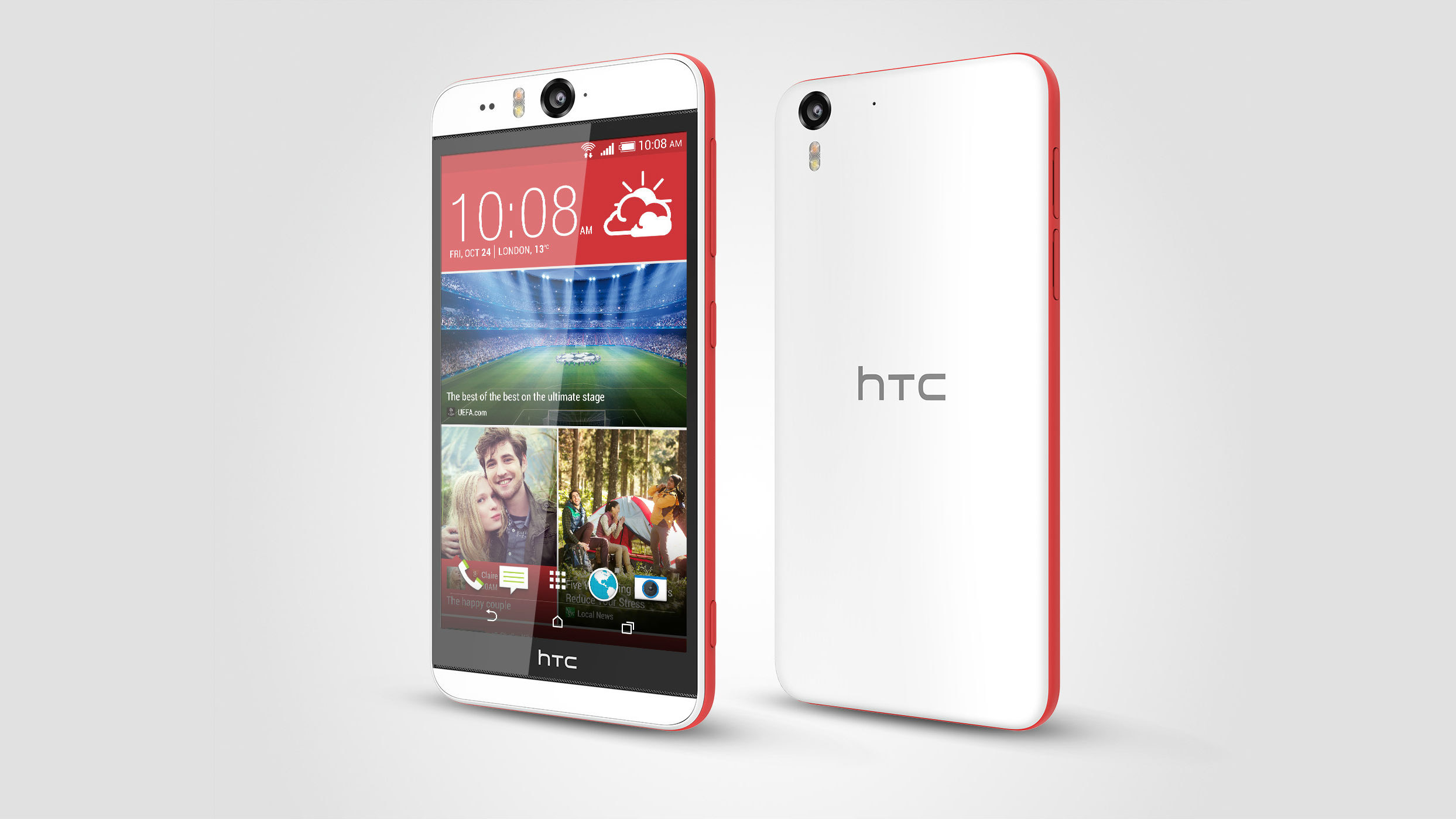HTC Desire Eye rolls onto the scene with 13MP front camera
While Zoe is headed to the iPhone

HTC's answer to the growing trend of phones with an emphasis on selfies is here. Meet the HTC Desire Eye, a device with an eye-popping 13MP front-facing camera.
The same snapper is situated around back, too, so users shouldn't have a bad side, so to speak, when using the new phone.
To secure the perfect selfie, the front camera is equipped with auto-focus plus zoom capabilities, a BSI sensor and f/2.2, 22mm wide-angle lens. Capture your best (or worst) moments in 1080p Full HD video, and light up your clips and stills with a Dual LED flash.
The 13MP sensor on the back is also of the BSI variety and boasts a f/2.0, 28mm lens and 1080p Full HD video recording. It's equipped with Dual LED flash as well.
Both cameras come with a suite of HTC Eye Experience camera software perks, including Screen Share, Split Capture, Auto Selfie, Voice Selfie and Crop Me In functions. More on that in a moment.
More HTC Desire Eye specs
The Desire Eye's other specs are nothing to scoff at. With a 5.2-inch Full HD 1080p display, the Eye comes in a compact 151.7 x 73.8 x 8.5 mm frame.
A quad-core Qualcomm Snapdragon 801 ramps up to 2.3GHz, and RAM settles in at 2GB with 16GB internal. A microSD slot will bump storage up by an additional 128GB.
Get daily insight, inspiration and deals in your inbox
Sign up for breaking news, reviews, opinion, top tech deals, and more.
In a complete non-shocker, the device runs Android with HTC Sense and blasts the hardware maker's HTC BoomSound audio tech.
To run all the multimedia content users are sure to capture with the Desire Eye, HTC has packed in a 2,400mAh battery.
The HTC Desire Eye release is slated for mobile operators and big-box stores in the EMEA, Asia and US beginning sometime this month. Still no word on price, unfortunately.
HTC Eye Experience
As for the aforementioned HTC Eye Experience, think of it as a new set of photo and video software tools designed to take HTC handset cameras to their full potential.
Features like face tracking will keep users in frame and up to other four people appropriately positioned during a video chat or conference call. A screen sharing function brings some desktop capability to a palm-sized device.
Not all of the HTC Eye Experience's features are designed to keep you at your professional best. Split Capture lets users split-screen shots taken with the front and rear camera, giving some context to your duck lips or whatever your preferred selfie-face happens to be.
Voice Selfie is just what it sounds like, with users able to activate front-camera capture by uttering, "say cheese" or "smile." Video recording can be initiated in the same fashion by saying, "action" or "rolling."
And because face fusion was apparently popular on the HTC Desire 820, the Eye Experience includes this and Live Makeup for extra fun.
The HTC Eye Experience will also head to the HTC One M7, HTC One M8, HTC One E8, HTC One Mini, HTC One Mini 2, HTC One Max, HTC Desire 816, HTC Deisre 820 and HTC Butterfly 2 in the coming months.
Zoe 1.0 branches out to iPhone
The video-editing app we met with the original HTC One is also getting an update, one that brings her … er, it … to Android devices as standalone app and, later this year, to the iPhone.
Meet Zoe 1.0, the same app with a few new bells and whistles. Users can now create short, medium and long Zoe clips comprised of just still photos or an avalanche of video clips. A new content engine powers these enhanced capabilities.
Collaborating on joint image remix projects is easier thanks to a new UI, and social sharing is a hallmark of the application.
Look for Zoe 1.0 to be full integrated on the new Re camera.
- Check out our HTC Desire Eye hands on review to learn what we thought of the new phone
Michelle was previously a news editor at TechRadar, leading consumer tech news and reviews. Michelle is now a Content Strategist at Facebook. A versatile, highly effective content writer and skilled editor with a keen eye for detail, Michelle is a collaborative problem solver and covered everything from smartwatches and microprocessors to VR and self-driving cars.
